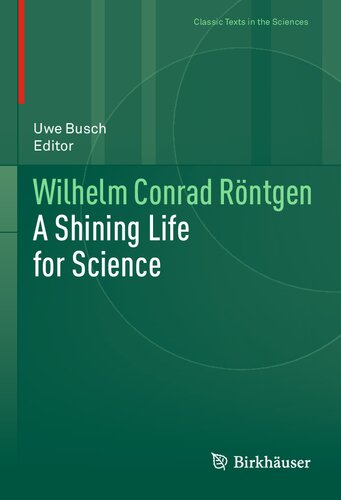

Most ebook files are in PDF format, so you can easily read them using various software such as Foxit Reader or directly on the Google Chrome browser.
Some ebook files are released by publishers in other formats such as .awz, .mobi, .epub, .fb2, etc. You may need to install specific software to read these formats on mobile/PC, such as Calibre.
Please read the tutorial at this link: https://ebookbell.com/faq
We offer FREE conversion to the popular formats you request; however, this may take some time. Therefore, right after payment, please email us, and we will try to provide the service as quickly as possible.
For some exceptional file formats or broken links (if any), please refrain from opening any disputes. Instead, email us first, and we will try to assist within a maximum of 6 hours.
EbookBell Team

4.7
76 reviewsIt was one of the great moments of humanity when Wilhelm Conrad Röntgen (1845– 1923) discovered a new kind of radiation on 8 November 1895. He himself modestly called them “X-rays”. Röntgen’s name and his rays became world famous. On 10 December 1901, Röntgen received the first Nobel Prize in Physics. X-rays have lost none of their appeal since then. They still permeate all areas of science, technology and medicine and accompany us in our everyday lives.
However, Röntgen’s scientific work cannot be reduced to this one great discovery alone. He was an excellent natural scientist, and his spirit of research is still an example for many scientists today. Röntgen’s very special interest in precision physics is also more topical than ever.
This carefully curated volume offers a multifaceted view of an outstanding natural scientist and provides insights into his personal legacy.